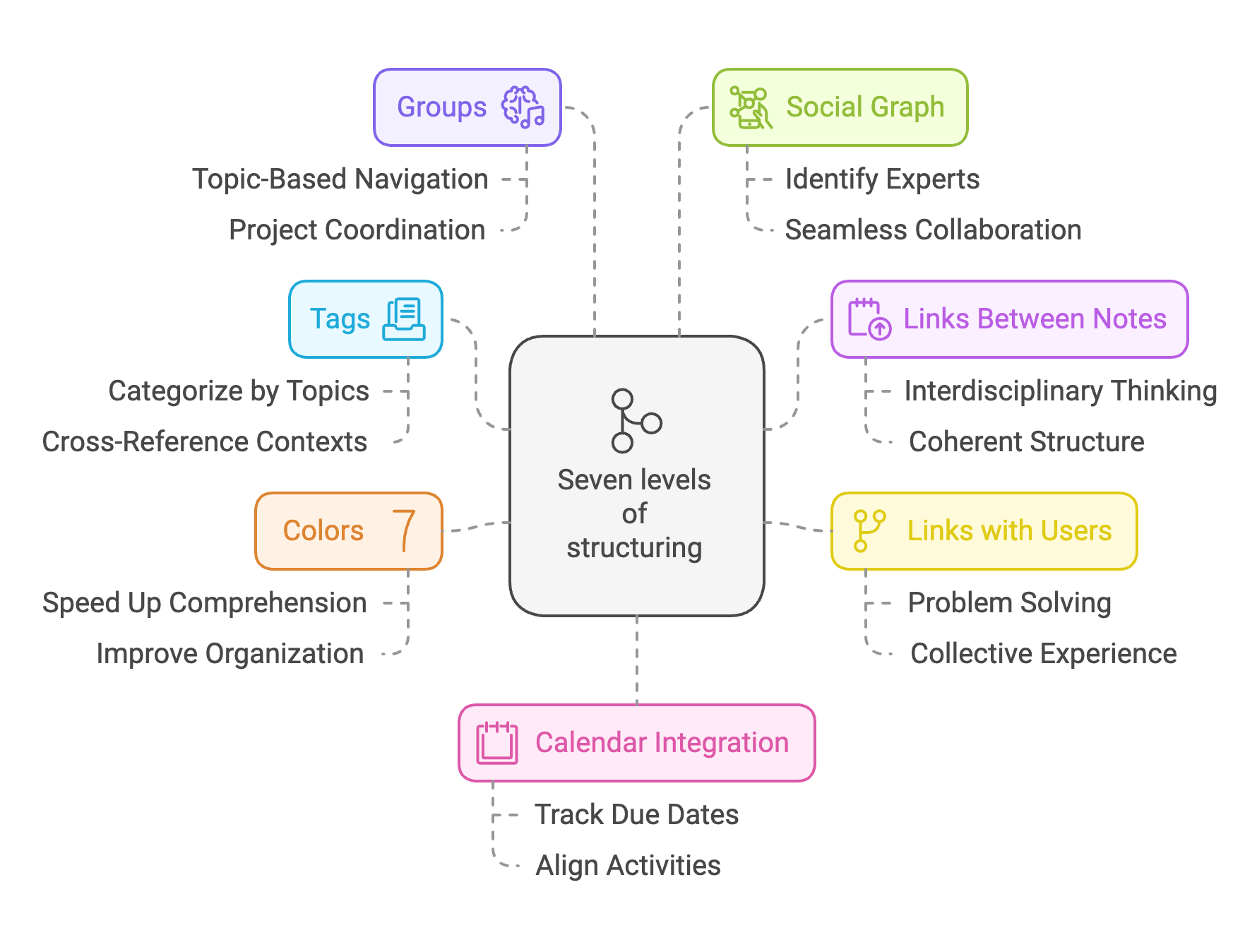In today’s fast-paced world, effectively managing and structuring information is critical to productivity and clarity. Whether you’re working on a project, attending a lecture, or brainstorming ideas, having the right tools and strategies to instantly organize information can make all the difference. Below, we’ll look at seven essential levels of information structure and why implementing them in real time is vital.
1. Tags
Tags are the foundation of information structure. They allow you to categorize and retrieve notes based on topics, sections, or keywords. Unlike rigid folder systems, tags provide flexibility by allowing you to cross-reference across contexts. For example, a single note tagged “finance” and “strategy” can be found in either category.
2. Links Between Notes
Linking notes creates a web of ideas, making it easier to see the big picture. This method, inspired by systems like Zettelkasten, reflects the way our brains connect related concepts. For example, linking notes about “machine learning” to “data ethics” might spark ideas for a research project.
Benefits of links:
- They encourage interdisciplinary thinking by connecting topics.
- They transform disparate ideas into a coherent structure.
3. Links between notes and users
Collaboration thrives when information is linked not only by content but also by participants. Linking notes to specific users promotes knowledge sharing and makes it easy to consult with experts in a team or community.
Why it’s important:
- Encourages collaborative problem solving.
- Creates a dynamic database of collective experience.
4. Colors
Colors act as visual cues, allowing you to instantly categorize and prioritize. For example, red could indicate urgent tasks, green - completed notes, and yellow - drafts. Or use an idea compass where you color-code all notes into major, minor, complementary, and contrasting.
Benefits of color coding:
- Speeds up comprehension by using visual memory.
- Improves organization, especially in visually intensive projects.
5. Groups
Grouping notes by topic, project, or workflow makes navigation and collaboration easier. Whether you're managing a semester-long course or coordinating a startup product launch, grouping provides logical segmentation of information.
Key Benefits:
- Group users around a topic or create teams to work on projects
- Eliminate clutter by structuring all your note messages at once
6. Social graph — useful contacts
In the age of network technologies, knowing who to contact is as important as knowing what to link to. The social graph connects information to the people behind it, creating a network of valuable connections.
Why it’s a game changer:
- Quickly identify subject matter experts.
- Promotes seamless collaboration by connecting the right people to the right projects.
7. Calendar Integration
Time adds another layer of structure to information. By linking notes to your calendar, you can track due dates, meetings, and progress milestones. This integration helps maintain accountability and align daily activities with long-term goals.
Benefits of Calendar Integration:
- Keeps workflows on schedule.
- Prevents information overload by focusing on what’s relevant now.
The Importance of Real-Time Structure
The speed at which information is collected often determines its usefulness. Structuring notes on the fly — during meetings, lectures, or brainstorming sessions — not only saves time, it ensures that ideas stay fresh and contextualized. Tools like Conoted provide this real-time organization, seamlessly combining these seven levels to create a dynamic, intuitive system.
Why Real-Time Structuring Matters:
- Prevents knowledge silos by making information immediately accessible and organized.
- Improves focus and decision-making by reducing time spent sorting through clutter.
- Increases team productivity by synchronizing the flow of information.
Conclusion
The ability to instantly tag, link, color code, and group information by tying it to people and timelines is no longer a luxury, but a necessity. Using these seven levels of structuring information, individuals and teams can unleash their full potential by creating systems that work as efficiently as their minds. Whether you’re a student, a professional, or a creative thinker, mastering structuring in real time will enable you to turn scattered ideas into actionable knowledge.
